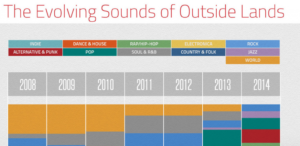
A picture’s worth a thousand words, but an image that’s attractive or tells a compelling story is worth a thousand shares. People understand that images are powerful — at least for B2C. There’s a conventional wisdom that great visual content is a necessity when marketing to customers, but extraneous when the audience is another business.
However, the common perception is wrong. Just because B2B firms don’t have to appeal to the average person doesn’t reduce the appeal of easily digestible images. Market research shows that 44% of users are more likely to engage with a brand that posts photos, and “users” encompasses both individual customers and businesses. There’s a place for great visual content in the B2B world, and a unique set of best practices. Here are three tips for B2B visual content best practices.
1. Link platforms
We’ve touched on this before, because it falls under efficient marketing practices as well, but linking platforms is a necessity. The idea behind visual content is that it will be compelling enough to be shared. Once it’s been shared, though, that content needs to lead back to your site.
By linking your social media platforms, making it easy for visitors to connect, you’ll increase the odds of conversion. After all, if your customers see something they like, it needs to be as easy as possible to access your site. Every impediment makes the chance of them bouncing higher.
2. Put your services in context
Even if your business doesn’t deal directly with customers, your products end up somewhere, and play a part in making people’s lives easier. For a B2B firm, a visual content plan should tell this story.
Gracenote is a B2B media metadata database that powers iTunes. They are “a ubiquitous music database,” in the words of Search Engine Watch. However, they are B2B. Unlike AllMusic.com or the Internet Movie DataBase, they do all their work behind-the-scenes. Consequently, they’re both one of the most-queried services on the internet and a relative unknown. In a case like this, a visual content plan should put a B2B company’s services or products in context.
Gracenote’s YouTube channel has videos showing how their products exist on desktops, mobile devices, and in automobiles, connecting its work to user’s lives. Since it’s a music database, their bread-and-butter is information about artists and genres. Gracenote has made this data digestible to the average user in the form of infographics about music festivals. The infographics leverage the fact that visual content is a great way to tell the story of your company.
3. Create compelling visuals
Above all else, your content will get followed and shared if it’s visually compelling. People share what they find interesting, and this is as true for B2B as B2C.
General Electric is one of the largest corporations in the world, but it’s better known to the public through subsidiaries like the NBC network. To the degree that the public knows the parent conglomerate, it’s through its appliances. In order to better tell the public its story, General Electric has a great online presence, particularly in the visual content department.
Like any company doing social media right, GE has a robust online presence through channels like Facebook, Twitter, and LinkedIn. However, where GE truly sets itself apart is with its presence on the image-heavy sites Pinterest and Instagram. This may seem counterintuitive for a company that manufactures everything from refrigerators to offshore petrol-drilling platforms, but GE shows how this can be done.
On its Instagram page, GE boasts 175,000 followers because it shares compelling images first and foremost. Some things are interesting on their own merits, like jet aircraft or next-generation robots. General Electric has some talented photographers on hand, though, who’re masters of composition. Their Instagram feed has plenty of close-up shots of their machinery, which both look compelling and demystify the creation process.
GE’s Pinterest page is similarly successful. GE has boards like “Brilliant Machines” and “From the Factory Floor,” which show other businesses how GE makes their products and links GE to customers. The manufacturing giant is also savvy at knowing their social media audience, with meme-friendly boards like “Gifts for Geeks” and “Mind = Blown.” Not only does GE create compelling content and know their audience—their visual content plan tells a story that humanizes the conglomerate and links it to people’s homes.
Your visual content should do the same: connect across platforms, contextualize your company, and be compelling. If you’ve done these three things, a visual content marketing plan will be effective whether aimed at customers or other businesses. What is your firm doing to create shareable visual content? Let us know on one of the social channels below.




